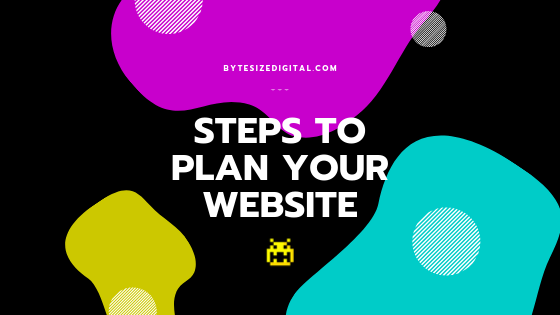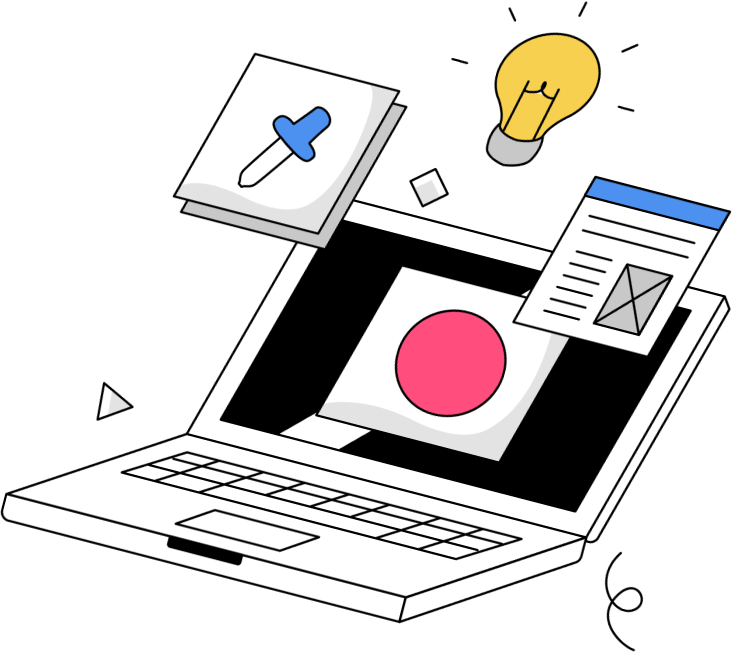If you’re not a designer or web developer, the task of creating a website for your business is definitely intimidating. With so many different options for building a website on your own, you and your team can be confident that you’ll be able to create a functioning website. Hopefully this functioning website looks pretty good too! To ensure the best results for your website, planning is very important. Just like how you wouldn’t show up at the grocery store without a list, you shouldn’t create a website without a plan. If you’ve never planned a website before, don’t worry. We’ll take you through each step and make it as simple and pain-free as possible.
1. Outline your goals and audience
Answer these questions: what purpose do you want your website to serve? And who will be coming to your website? Creating a website that’s tailored to everyone is impossible and ineffective. If you know your audience and what they want out of your website, then step one is complete. Throughout the following steps be sure to keep your goals and audience in mind. You’ll see the best results when you cater to those things.
2. Create a budget
Be realistic. How much are you willing to spend on your website? Shop around and check out prices. You can compare agencies to the DIY methods. Depending on where you choose to build your website, the prices can fluctuate. If you’re considering WordPress, Wix, or Squarespace, check out our blog to figure out which one will be right for you.
3. Choose your players
On a website project, it’s important to assign roles. You should assign a project manager, content writer, web developer, and web designer. Everything will go much more smoothly when each person knows their role and what’s expected of them.
4. Content strategy
Decide what information you want to display on your website. In this step it’s important to remember your audience. What will resonate best with them and answer their questions? Common pieces of content include, but are not limited to:
-
Blog
-
Calendar of events
-
Image gallery
-
Videos
-
Downloadable documents
This step is also a good time to decide your voice. Have your content writer create content that will align with your brand. Is your brand more fun and laid back? Or buttoned up?
5. Sitemap
If you’ve never had a business website before, you’ll be starting from scratch when creating the sitemap. A sitemap is simply a list of your website pages in hierarchical order. Most websites include an about page and a contact page. Depending on your type of business, you might want to include a services page or a portfolio page. Whatever you think your audience should know should be laid out in the sitemap!
6. Design strategy
Like we said before, designing a website when you’re not a designer is intimidating. Luckily, there are tons of helpful resources that will ensure your website has great design. The design of your website is huge, it should reflect your brand and give your audience a feel for your business.
-
If your business doesn’t have brand colors, try creating a color palette for your website with Coolors.co. This free generator will create a palette with colors that complement each other and work well for web.
-
Need a logo redo? Fiverr.com lets you access thousands of freelancers specializing in logo creation.
-
Get some inspiration for your design. Web Designer Depot is a great place to go to see what’s trending and get some inspiration.
7. Bring it to life
Have your assigned web designer, wireframe and mockup what your site will look like, taking into account all of the steps above. Seeing it produced right in front of you will let you see what’s going to work and what might need to be tweaked. After any changes to the mockup, it’s time to build. Have your web developer build the website on whatever platform you chose.
After your website is created, continue to optimize! User testing is a helpful way to see how real people interact with your website, so you know what might need changing.
If you have any questions about your next website or best practices, feel free to reach out to us at info@bytesizedigital.com! We’re happy to help.You might also be interested in our beginner’s guide to building a website.


